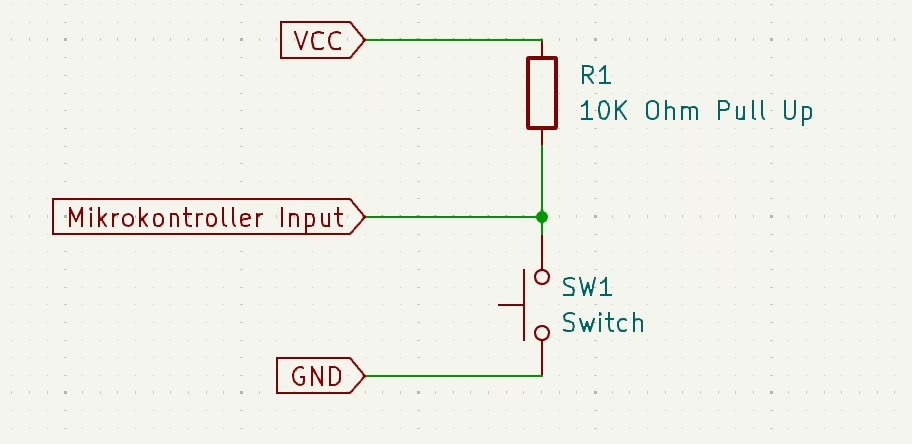What is a pull-up resistor?
-
28. May 2025
What is a pull-up resistor? Explanation for beginners
If you work with microcontrollers, buttons or digital inputs, sooner or later you will come across the term “pull-up resistor”. But what exactly is it - and why is it so important?
Pull-up - what's that all about?
A pull-up resistor pulls up the voltage level of a signal to a defined high state (e.g. 5 V or 3.3 V), when no one else is influencing the signal.
Without a pull-up resistor, an input can hang in the air - i.e. assume an undefined state. This leads to random behavior, malfunctions or false triggering.
Why do you need this?
Digital inputs expect clear states:
High = voltage present
Low = connection to ground
For example, if you use a push-button that switches to ground, the input is only
is only low,when you press the button.
But what happens if you don't press it?
→ This is exactly where the pull-up resistor comes into play!
It ensures that the input is pulled high - as long as the button is not pressed.

Taster offen → Eingang ist über den Pull-Up auf High gezogen.
Taster gedrückt → Signal wird auf GND gezogen → Eingang ist Low.
Interner Pull-Up bei Mikrocontrollern
Many microcontrollers - e.g. an Arduino - offer internal pull-up resistors that you can activate via software:
pinMode(2, INPUT_PULLUP);
This saves on external components and makes your circuit cleaner.
Typical values?
10 kΩ is a common default value
Depending on the application, 4.7 kΩ or 1 kΩ are also common
Too small = unnecessary power consumption
Too large = susceptibility to faults possible
Attention with open inputs
Without pull-up or pull-down, an input can start to “jitter”, trigger itself due to EMC influences or assume unwanted states.
A free input is like an antenna - it hears everything, but understands nothing.
Conclusion
A pull-up resistor ensures that an input never “hangs in the air”.
It is simple, inexpensive and indispensable in digital technology.
Whether externally with 10 kΩ or internally via software - never rely on luck with signal levels.
For the article on pull-down resistors click here.

